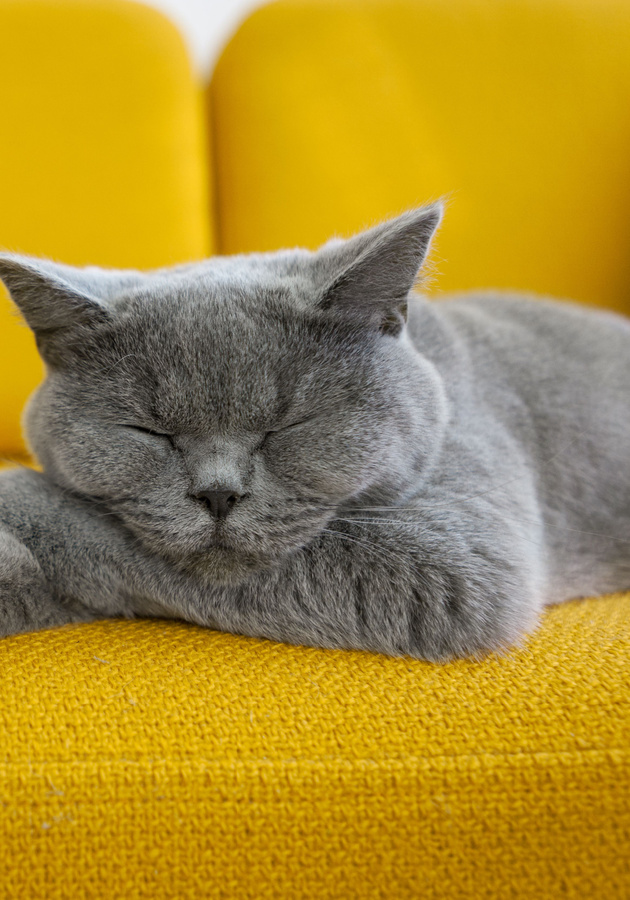Have you ever thought while watching a documentary about wildcats that your cat resembles them in appearance and behavior? This is because cats, although domesticated, differ only a little from their wild ancestors. But, domestication did bring some evolutionary changes, and in ‘’The Cat’s Meow,’’ a cat scientist and a great cat lover, Jonathan Losos, reveals what they are and what other changes we might expect from cats in the future. So, get ready to learn many interesting facts about your feline companion!
The cat paradox
In 2014, USA Today published a rather captivating, perhaps even shocking title, “Your Cat May Want to Kill You.” Although the article relied on scientific research, its title skilfully played with the truth, and only after you read what the study was about and its conclusions would you be able to understand why your cat surely won’t kill you. The thing was that in the research scientists compared behavioral tendencies, such as aggressiveness and sociability, among five feline species ranging in size from the housecat to the African lion. Their primary conclusion was that there aren’t many personality differences among cats, regardless of size. To any cat lover who has spent some time watching internet videos of tigers, lions, or other wildcats chasing laser-pointer dots, jumping into cardboard boxes, and rolling in catnip, this finding is not that surprising. In other words, if you can read your cat's expressions and body posture, you can read lion's or tiger’s as well.
Domestic cats differ little from African wildcats, the species from which they arose, not only in behavior but also in physical appearance. Of course, domestic cats are friendlier and more sociable - to humans and each other - but they still behave just like their wild ancestors. For this reason, we say that domestic cats are only barely or semi-domesticated. This, however, is not true for all cats - a small minority that are members of specific breeds diverge greatly from the ancestral physique and behavior. ‘’Selective breeding,’’ Losos notes, ‘’has created cats unlike those produced by millions of years of feline evolution.’’
So, as you may have noticed, we have a paradox here - most felines are very similar to their ancestral version, and some are quite different. Therefore, they will evolve in different ways in the future. For instance, the pet cats we have in our houses won’t shape the evolution of the cat species, mostly because they are neutered. For the cats that live independently of humans, we expect them to stay the way they are, while those that are unowned but live near people will likely evolve to keep ancestral wildcat ways of surviving outside while developing traits beneficial for living around us. But, enough about the cats’ future for now. Let’s hear a bit about their past and present by studying how they communicate with each other, and, of course, with us.
Meowww!
We can say with certainty that this is the sound everyone associates with cats. Think about it - even when you ask toddlers to imitate a cat, they will surely make this sound. But, have you ever thought about what cats are trying to say with their meow, and more importantly, to whom they direct this sound? If they are talking to us, does that mean their meow is a cat trait that evolved during domestication?
Cats communicate with their owners all the time, and, therefore, many conclude that they also communicate with each other. Nevertheless, the scientific papers say differently - adult cats rarely meow to each other. So, if meows are heard more frequently in cats’ interaction with us, the question is, what are they trying to tell us? If you have a cat, you probably know that it has ‘’a diverse meow-vocabulary,’’ that is, it makes a different sound when it wants to eat, play, or cuddle. What do you think - would you be able to identify different meows of a cat that is not yours? Well, there is a high possibility that you wouldn’t. One study, for instance, showed that even participants who lived with cats most of the time couldn’t identify the context of a cat call played on headphones. When they heard the calls of their own cats, they were more successful. So, this suggests that there is no universal cat language - each cat has its own specific meow that they use in different situations, and people who live with them learn to recognize what each meow means.
If cats mostly meow when communicating with us, does it mean they did not make these sounds before domestication? Apparently not. Observations indicate that most small feline species also meow. African wildcats, for instance, meow when they are about to be fed, engage in aggressive encounters, or pace back and forth. However, the computer analysis showed that their meows are lower pitched and longer in duration compared to the meows of domestic cats. What do you think this difference comes from? Domestication, of course. As short, higher-pitched sounds are inherently more pleasing to our auditory system, domestic cats have evolved to meow in a way we find more appealing. Amazing, right?
Should you keep your cat indoors or outdoors?
One science writer wrote that to see a cat outside is to see ‘’a creature in its element: stalking through the grass, climbing trees, battling for their territory.’’ Therefore, he believes keeping a cat indoors is equivalent to keeping your race car in a garage. Do you agree with his words? Do you let your cat roam outside or keep it inside to provide it with a safe and comfortable life?
Numerous organizations in the United States advocate for keeping cats indoors, hence, more and more Americans nowadays choose to do that. Brits, on the other hand, think not letting cats go outside is unnatural, perhaps even harmful. Generally, proponents for keeping cats indoors say that by staying inside they avoid getting into trouble, such as catching birds or running into cars and dogs, and reduce the risk of illnesses, such as feline leukemia. Those who hold the opposite view think that the benefits of going outside extend beyond physical fitness. ‘’Outdoor cats get to do what cats have done since time immemorial—hunt, sniff, inspect, patrol, explore,’’ Losos says. They also believe that indoor cats get frustrated by their inability to satisfy their desires and, consequently, develop inappropriate behavior such as biting, scratching furniture, or not using the litter box. We cannot know whether this is true since no studies support these claims. However, according to cat experts, indoor cats lack mental stimulation, so you should provide them with a variety of toys, boxes to jump in, and high places to climb. Moreover, as they like to hunt, you should play with them in a way that allows them to express their predatory behavior.
Is there a way you can let your cat roam but somehow ensure that it won’t harm intermediate wildlife, get lost, or run into the traffic? Of course, you can - by dressing your cat in a garish collar, for instance, to make it more detectable by potential prey. You can also reduce its desire to hunt by providing well-designed cat food high in meat so the nutrients they miss don’t drive them to go hunting. To ensure your cat never gets lost, a cat tracker attached to its collar can help you track it down and bring it home.
Cats took the lead in adapting to living with us
Losos notes that ‘’Across the many species that have been domesticated—from ducks to dogs to donkeys—two general paths have been taken.’’ The first one included humans taking charge of the animals from the outset by enclosing them in large areas and directing their breeding by avoiding killing females so the herd would grow more quickly. The domestication of animals such as cows, sheep, ducks, and goats began this way. As you might assume, this route did not apply to cats who ‘’took the lead in adapting to living with us.’’
About ten thousand years ago, people transitioned from a hunter-gatherer lifestyle to settling down to become farmers. The agricultural lifestyle brought many advantages not only to people, but other species, such as rodents, who exploited the newfound availability of seeds and grains, and, consequently, wildcats who fed on them. The abundance of food, however, wasn’t the only reason cats started hanging around people. Another benefit they enjoyed was fewer larger predators who avoided the human settlements. So, domestication began when cats provided humans with pest control services. Therefore, they encouraged their presence, and in return, cats evolved to associate with humans, and before long, Felis silvestris lybica transformed into Felis catus.
When did all this happen? Depiction of cats as part of everyday family life - under the table, in people’s laps - became frequent elements of tomb decoration in the time of Pharaoh Thutmose's reign, about 3500 years ago. It was around this time when people in ancient Egypt started portraying the goddess Bastet as a woman with a cat, not a lioness head, as previously. This was the golden time for feline species - they were treated as sacred, the embodiment of the goddess herself.
With the invasion of the Romans, Egyptian culture and religion started disappearing, and so did the worshiping of Felis catus. Nevertheless, their role as family members never changed, as millions of cat lovers over the centuries prove. So, they will, undoubtedly, be with us in the days to come. What will that future look like for them?
The future of cats
Many people love cats and would love to have them as pets, but numerous reasons stand in the way of having them. One of the most common ones is allergies. According to research, around 20% of people worldwide are allergic to cats and, as with all allergies, this one can bring severe consequences to some, such as asthma attacks that require hospitalization. Cat allergies result from protein referred to as ‘’Fel d 1” contained in cats’ saliva - when cats groom themselves, it gets on their skin and fur and, once dried, joins the dust mites found in our homes. Imagine it turned out your beloved feline friend is responsible for your allergic response. You would probably pay a lot of money to decrease your suffering without having to get rid of your pet, right? Many companies have been trying to capitalize on this opportunity - one of them is Nestlé Purina, who developed a cat food that reduces the amount of allergen a cat produces by nearly 50%. This still isn’t good enough, tough, and for this reason, scientists are now exploring the possibility of eliminating the gene that produces the Fel d1 protein. Hopefully, the elimination won't have any harmful repercussions for the cats.
Genetic engineering will definitely affect the future development of cats. Losos suspects such a development will go in the direction of developing a breed that won’t go outside or have the urge to hunt. Perhaps it would also be a breed of cats smaller in size. This would definitely be a cat of the 21st century - adapted for life in the apartment, friendly to the outdoor environment, sedate, and laid back. Would such genetic changes affect cats’ mating preferences? Losos believes they possibly would. As the 21st-century friendly cat would refuse to mate with rough and tumble feral cat, it is possible we would end up with two groups of cats that are ‘’reproductively incompatible and thus different species.’’
So, the future holds numerous scenarios for Felis catus. Developing new breeds that don’t cause allergies and that are more placid and indoorsy are only some of them. How these and other scenarios will unfold remains to be seen. Until then, there is so much we must learn about this magnificent species that has enriched our lives for such a long time.
Final Notes
If you want to be a better friend and caregiver to your cat, you should get to know its origins and evolution, and ‘’The Cat’s Meow’’ can definitely help you with that. It is an impressive, enlightening, and charming piece any cat lover should read. And, of course, if they have their cat beside them while doing so, the enjoyment of reading this book will be greater.
12min Tip
Always make sure your cat gets enough activity daily. Not only will it make it lean and protected from various illnesses, such as obesity and diabetes, but also be mentally stimulated, which is particularly important for indoor cats.




























